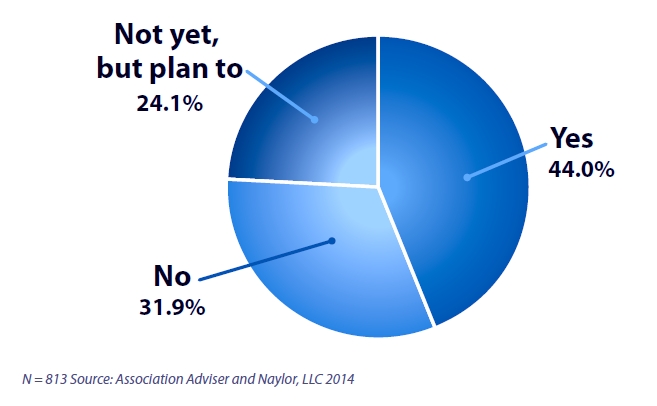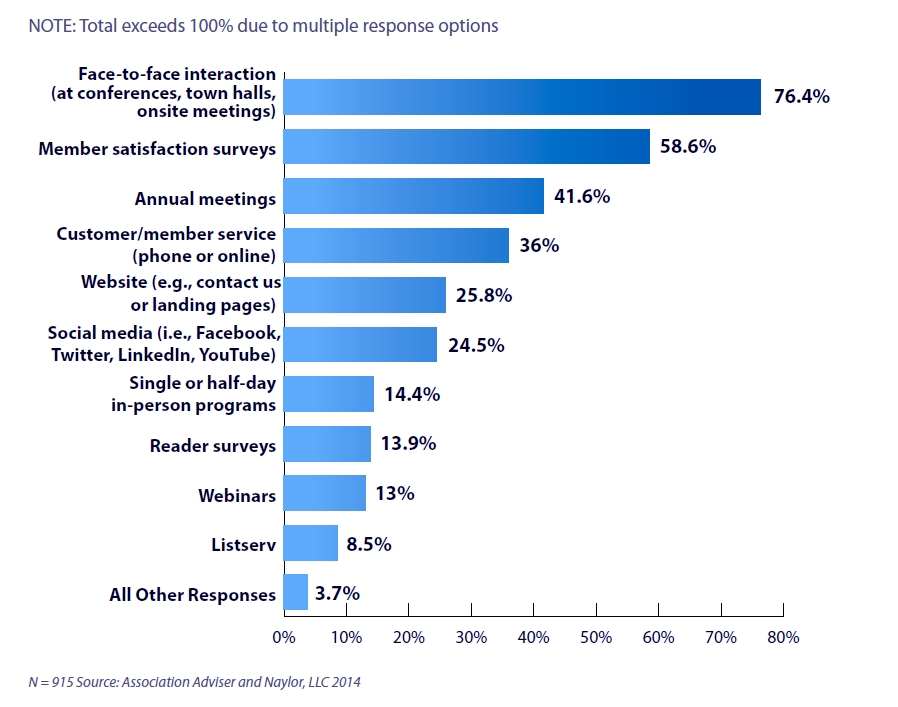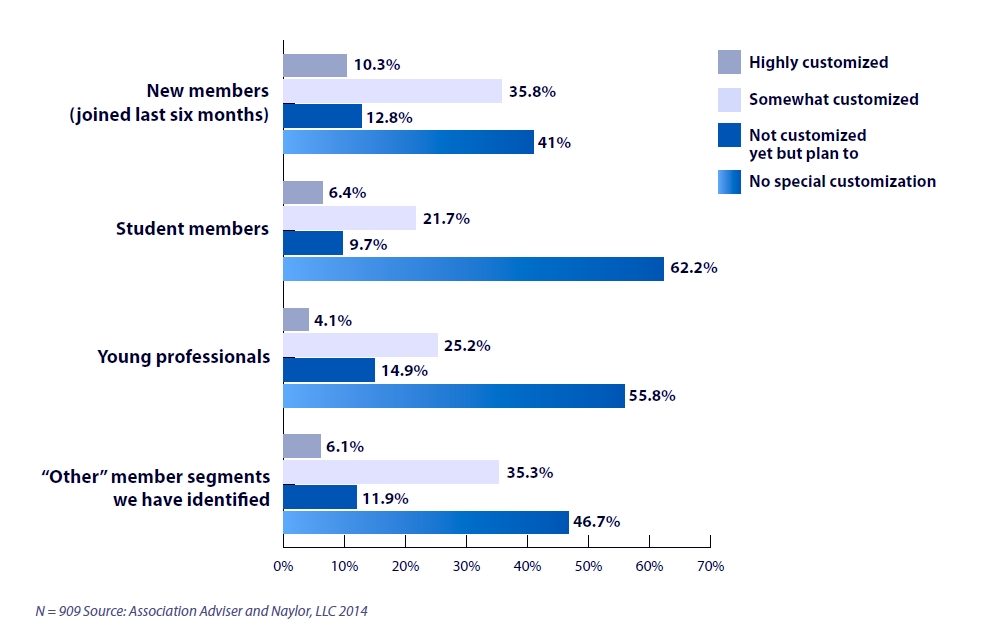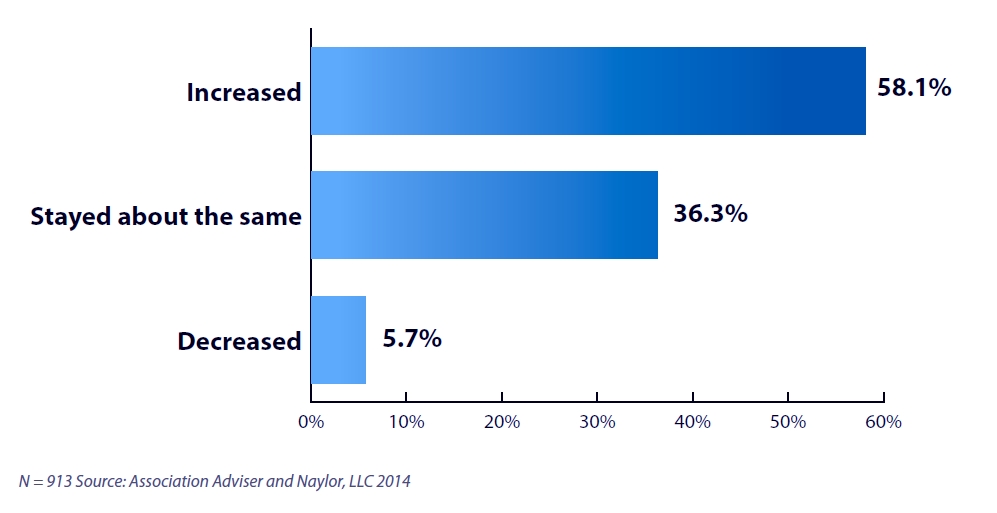Rising Above the Static

With the growing communications landscape delivering more messages and advertising to your members than ever before, it’s getting harder and harder to rise above the static to get your message heard.
That’s why Association Adviser teamed up with Naylor and several societies of association executives for the third consecutive year to conduct a benchmarking study aimed at providing association professionals with best practices for member communications. Our soon-to-be-released 2014 Association Communication Benchmarking Report helps to establish a point of reference for comparing your communication strategies against an aggregate of other North American associations. It also includes recommendations and tactics that may help your association cut through the clutter so that more of your messages reach your members.
|
As has been the case each year since 2011, association executives continue to believe that the majority of their communication efforts are ignored. Perhaps as a result of this, most associations seem to be very willing to try new communication tactics. For example, nearly 70 percent of the 1,031 association leaders who responded to the survey reported that they have integrated video into their communication strategies or plan to do so in the near future.
Have you integrated video into your organization’s communications efforts?
Where a lot of associations run into trouble is in measuring the performance of new communication tactics and then having the resources to actually implement these new tactics on an ongoing basis. Our study revealed that most associations are not willing to staff up commensurately to keep up with the increasing amount of communication they send out. For instance, an overwhelming number of associations have just one staff member responsible for all marketing, communications and publishing initiatives. It becomes impossible to devise any kind of communication strategy when just keeping up with the current workload becomes an unreachable goal.
Know your audience
When respondents to our benchmarking study were asked what it would take to get higher member engagement rates, the number one response was “the ability to really understand what kind of content recipients are expecting.”
Which of the following information is most important to your members?
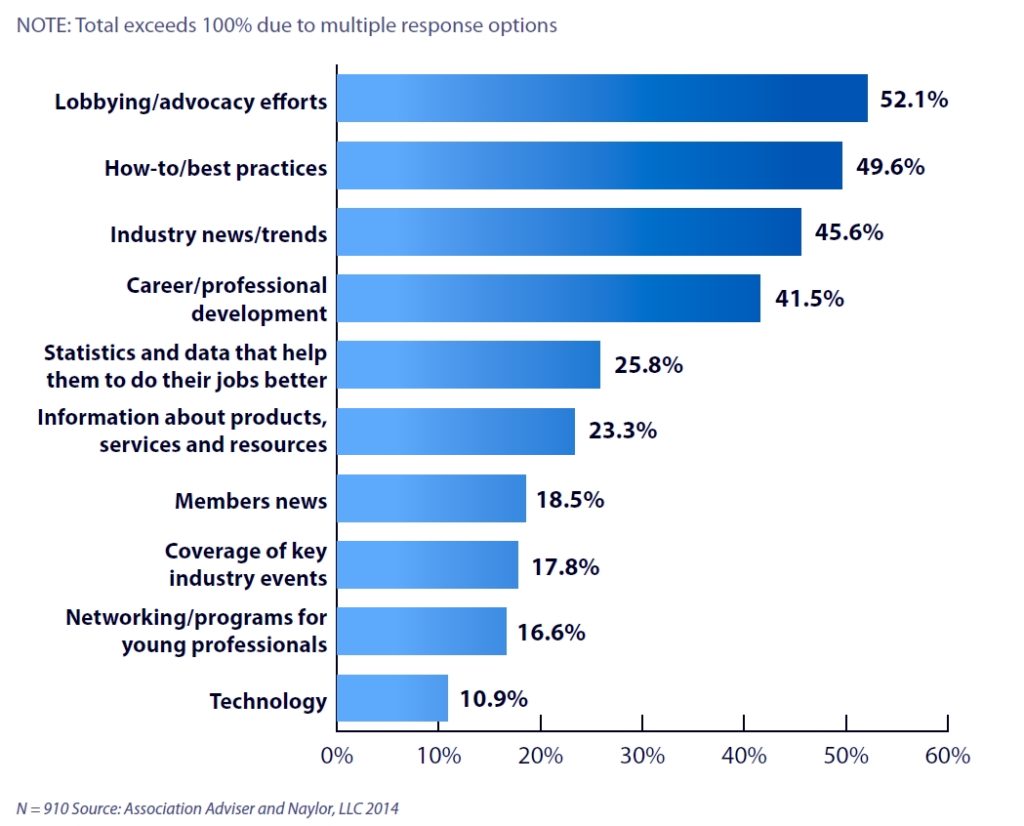
When they ranked topics they thought to be most important to their members, the top three picks were “lobbying/advocacy efforts,” “how to/best practices” and “industry news and trends“ and the top three ways they determined this were “face-to-face interactions,” “member satisfaction surveys” and the “annual meeting.”
How do you decide which issues are most important to your members?
Surveying key stakeholders, including association members, vendors and staff, is definitely a best practice for discovering what resonates with your audience. By asking the right kinds of questions, you can determine what their information needs are, including what delivery formats they prefer and how often they’d like to hear from your association.
A majority of our survey respondents said they do regularly survey their advertisers and sponsors to determine if they think they’re getting their money’s worth. Not surprisingly, a majority of respondents also incorporate advertiser and sponsor feedback into their pricing considerations, mix of media offerings and other sponsorship programs. This too is a best practice because advertisers and sponsors are so vital to an association’s financial sustainability. You may be pricing yourself out of the market by a narrow margin and missing out on potential advertisers who could bring your association thousands of dollars in additional revenue. It’s always better to have four sponsors at $5,000 than zero sponsors at $20,000!
Right audience, right content, right platform
The second most common challenge faced by associations was “communicating member benefits effectively” yet less than 50 percent of respondents reported that they provide customized communications to new members. Even less of the respondents reported sending customized communications to other subgroups, such as student members, young professionals and other member segments. Newer members might not be aware of all of the benefits that they are entitled to through the association and may have been attracted to one specific benefit that they only had a temporary need for. Customized communications can help assure your members are aware of services that they are entitled to, which may compel them to stay with your association when it becomes time to renew their dues.
To what extent do you customize communications for your members?
Once you establish what kind of information your audience wants and how they prefer to receive it, you can concentrate on creating content that fits those needs and then deliver it in a way that it will be best received. The frequency with which you deliver your messages also will have an impact on whether your communications are viewed as distractions or received with anticipation.
It really comes down to common sense … if the information you provide is vital to your members on a daily basis, then you are providing a member service by sending daily emails. Otherwise, daily emails may become tedious and lead to members either unsubscribing from or ignoring your emails.
Though we’ve already established the importance of knowing your audience and delivering your messages in ways that are most accessible to them, it is also important not to turn a blind eye to your other communication channels. Cross-purposing content is a great way to get the most value out of your marketing efforts. If you’ve created a powerful presentation, why not upload it to Slideshare and post it to LinkedIn? Or convert a single slide from that presentation into an image and share it on social media sites or within an email? You’ll also want to cross-promote your content through all of your communication vehicles, in order to reach as many members and potential members as possible.
Engaging in a two-way dialogue
Online conversations require a way for both parties to share ideas, so make sure to give your audience a voice. If you remember to ask your audience questions and provide a way for them to respond, you will likely receive valuable feedback. Just think about your own social media interactions, if you post something and 15 people comment but only one of those comments is in the form of a question, who are you most likely to respond to? The same goes for emails and articles; adding a quick point of contact and a call-to-action at the end will generate more feedback than you might expect. We recently implemented an online marketing tool called Click-To-Tweet in order to add another level of interaction with our audience. Telling your audience what to share also compels them to do so. In short, you can better engage your audience by simply asking them for feedback and telling them what to share.
Measuring effectiveness
A positive result that emerged from our study is that nearly 60 percent of the associations surveyed said that the effectiveness of their email marketing has increased over the last three years. Rather than just relying on gut instinct or staff feedback, over half of respondents determined their effectiveness based on measurement reports that provide statistics such as opens, clicks and bounce rates. There seems to be a hidden fear of “Big Data” that gets associated with the measurement of online communications. The truth is that this measurement comes in the form of reports that we’re all familiar with seeing and any metric that initially seems unfamiliar is easily defined with a quick Google search. Even those of us who are uncomfortable navigating website analytics can review an analytics report and easily determine the positive and negative trends. Don’t fear the data; the data is just there to help.
How has the overall effectiveness of your email marketing changed over the last two years?
Committed to improvement
Reading the latest communications news, best practices and leadership strategies will help keep your association in the know. To glean more insights from our latest benchmarking study and find out where your association stands, download it today at www.Naylor.com/Benchmarking.
Tamara Groom is a marketing specialist with Naylor, LLC.

